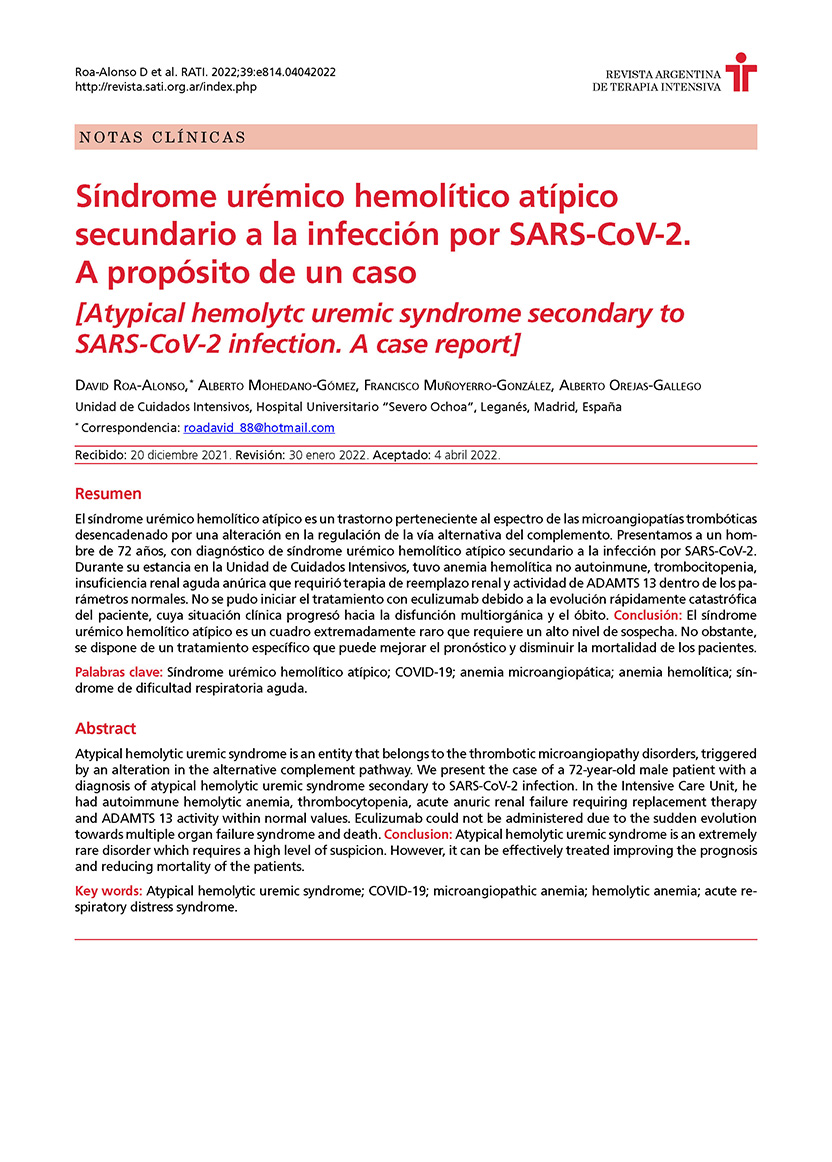Resumen
El síndrome hemolítico urémico atípico (SHUa) es una entidad poco frecuente en la unidad de cuidados intensivos, no obstante, con una tríada diagnóstica característica y un tratamiento específico que puede mejorar la morbimortalidad asociada a este síndrome.
A continuación le presentamos el caso de un paciente varón de 72 años que ingresó en la unidad de ciudados intensivos con diagnóstico de neumonía por SARS-CoV-2 que a lo largo del ingreso desarrolló un SHUa secundario a esta infección. No se pudo llegar a administrar el Eculizumab por la súbita evolución hacia el síndrome de disfunción multiorgánica, y el fallecimiento.
La revista no retiene los derechos de reproducción (copyright) por lo que los autores pueden volver a publicar sus trabajos con la sola mención a la fuente original de publicación.

